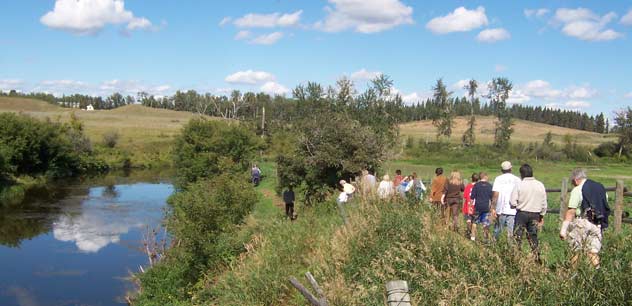
Q & A for Rural Communities
This document gives answers to commonly asked questions, with a particular emphasis on landowner concerns.
1. Issue: The trail may be used by only a small part of our population. Why should we encourage strangers to come to our community?
Click for Response:2. Issue: The organization proposing the trail is a volunteer group. Does that mean that our municipality will need to pay the largest percentage of the maintenance costs and that any policing or health services needed on the trail are public responsibilities?
Click for Response:3. Issue: Trails may contribute very little or nothing to local economies.
Click for Response:4. Issue: Landowners adjacent to trails could be negatively impacted. Trails may lower real estate values, divide agricultural land and block access to pastures and fields, resulting in loss and damage to property, or increased insurance costs.
Click for Response:Research indicates that property values typically increase or remain unchanged when a trail is constructed in proximity to private property; it is rare or unusual for property to devalue. Land developers promote trails as a value-added benefit for people who consider purchasing in their development; properties adjacent to a trail have higher values because of that location.
Division of agricultural property
Wilderness routes, park trails, canal service roads, section roads or abandoned rail lines all manage the problem of intersecting fields. Alberta TrailNet has agreed to make arrangements with landowners to allow continued access when a trail traverses TrailNet land; landowners requiring access should contact us in this regard.
Loss and damage of property
Trail users are informed of appropriate behaviour through signage and messages in trail guides and on maps. Other users provide “eyes on the trail” and promote self-regulation; local trail stewards assist the local trail operator, who is responsible for ensuring that users are aware of and obey the regulations for that trail.
Legislation such as the Petty Trespass Act and the Trespass to Premises Act apply to Crown and all other lands, except land under grazing lease. Both Acts create offences for persons who enter onto land without permission or otherwise do not have the right to enter.
Both Alberta TrailNet and the Government of Alberta do not believe that landowners should be responsible for the safety of recreationists on their land. Both have worked successfully to have the Occupier’s Liability Act changed to reduce the duty owed by landowners to visitors.
Most long-distance trail users share a respect and love of the land with rural landowners. Trails offer rural residents many benefits: they connect communities to each other, allow users to interact with nature, and offer a peaceful setting for sharing family experiences.
Increased insurance costs or difficulty getting coverage
Trails are treated no differently than roads, since both provide access to habited areas of the province. Insurers have indicated that a landowner’s insurance amounts or costs will not increase due to a trail being developed on adjacent land. They have also indicated that rural property insurance policies have a minimum $1,000,000 general liability insurance built into the rural insurance policy.
5. Issue: Do trails need to have a 20 km buffer zone on either side? This would restrict farming practices.
Click for Response:6. Issue: Trail brochures promote off-trail excursions to investigate points of interest. This could infringe on my privacy.
Click for Response:7. Issue: I’ve heard about free roam legislation. Basically, this is the right to trespass at the discretion of the trespasser.
Click for Response:8. Issue: Who determines what kinds of recreational activity will occur on this trail?
Click for Response:The decision regarding approved uses for a section of trail is made by the municipality in consultation with residents and the local trail operator group. In Alberta, in particular on public lands such as parks and protected areas, approved uses are determined by the Government of Alberta, and may include other uses besides those listed above. Where the trail crosses private land (which can only occur with specific written permission from that landowner), the landowner determines approved uses in consultation with the local trail operator. For municipal lands, the municipality determines approved uses in consultation with the community. Once a local decision is made regarding approved trail uses, the trail is designed to accommodate those uses and managed to control unauthorized use.




